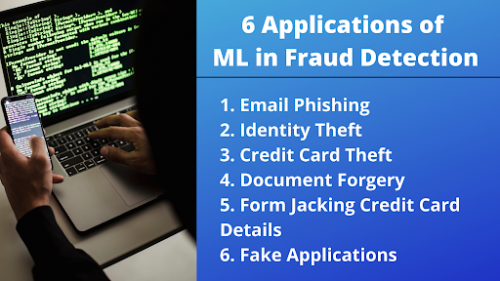Fraud has been a significant issue in the banking, medical, insurance, and IT sectors in recent years. There has been an increase in online transactions through different payment options such as credit/debit cards, PhonePe, Gpay, Paytm, etc. Due to this, fraudulent activities have also increased. Moreover, fraudsters have become proficient in finding loopholes that they then misuse. Hence it has become a challenging task to make a secure system for authentication and preventing fraud.
This is where fraud detection algorithms powered by machine learning prove helpful.
ML-based Fraud Detection Algorithms
In the rule-based approach, the algorithms cannot identify the unseen patterns and thus cannot predict fraud. But in the real world, fraudsters are very skilled and can adopt new techniques every time. Therefore, there is a necessity for a system that can analyze patterns in data and predict and respond to new conditions for which it is not trained or specifically programmed.
Here, a robot works to learn on its own and becomes better by experience. Consequently, we use Machine Learning for fraud detection. It is an effective way of catching fraud because of its fast computing and does not even require the supervision of a fraud analyst. Machine learning helps decrease false positives for transactions as the patterns are detected by an automated system for streaming transactions in huge volumes.
6 Applications of ML in Fraud Detection
Let’s look at six applications of ML in the fraud cases that exist in the real world. You have possibly experienced these frauds in one form or the other.

-
Email Phishing
This is a fraud case where the fraudsters deceive people into answering an email with their personal data. Using the information, they can hack into your system and loot your money.
Machine Learning uses its algorithm to distinguish between actual and spam email addresses, thus preventing fraud. They will study the subject lines, the content of the email, and the sender’s email details before dividing them into genuine or fraudulent emails.
-
Identity Theft
In this kind of fraud case, the criminals cheat your identity connected with your bank accounts. They will alter the IDs or the passwords, thus blocking entry into these accounts.
Machine Learning assures that nobody can alter the password or update the identity associated with an account. You will be notified as soon as anyone attempts to hack into your account. Two-factor authentication and other measures, along with human-like intelligence, help guarantee better prevention of frauds.
-
Credit Card Theft
Through methods such as phishing, fraudsters can access your credit card details and use them wrongly. You would have to pay for the purchases you have not made.
Credit card fraud detection with the help of machine learning can prevent such trade-offs.
-
Document Forgery
Fake IDs are also available in the eCommerce business, which can cause many issues for the proprietor of these Ids. Machine Learning can quickly identify counterfeit identities.
The algorithm has trained its Deep neural networks to distinguish between a fraudulent and authentic identity, thus creating a full-proof system.
-
Form Jacking Credit Card Details
Form jacking is the hijacking of your credit card details. While entering the details into a particular form online, the hacker would be equipped with their means to seize the information and use it elsewhere.
This can be identified by the Machine Learning algorithms integrated into your website. It will secure the data and ensure that it does not fall in the hands of malicious attackers.
-
Fake Applications
If fraudsters have access to your IDs and other details, they can easily use it to create a credit card or any other fake application in your name. The fraud detection models have been devised for this specific reason, which accesses neural models to understand whether the application is genuine or fraudulent.
Conclusion
In order to expose dubious activity, and more importantly, to distinguish false alarms from true fraud, companies like PayPal use an indigenous AI engine built with open-source tools. With the help of this human and AI solution, Paypal has managed to reduce its false alarm rate to half.
Machine learning techniques are certainly more reliable than human review and transaction rules. The machine learning solutions are dynamic, scalable, and process a significant number of transactions in real time.
Maruti Techlabs, an AI & machine learning solution provider is focused on improving customer experiences through technology. Having worked on multiple challenging projects from around the world, we understand how to navigate through strict laws and the risk of replacing current technology when it comes to automation.
Interesting Related Article: “What is fraud? Definition and examples“
